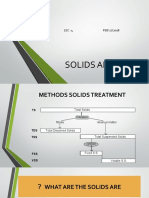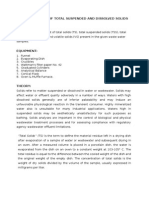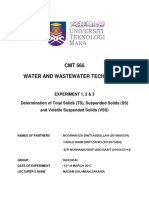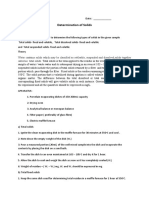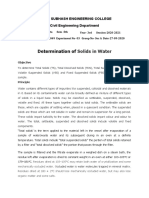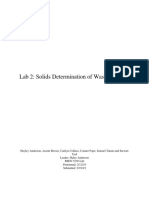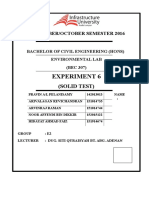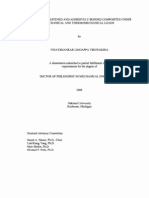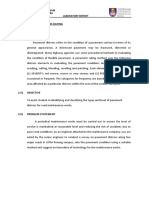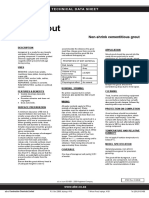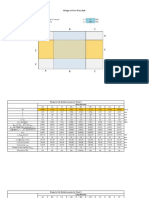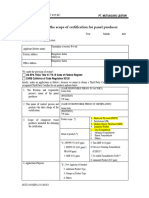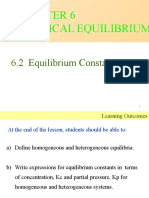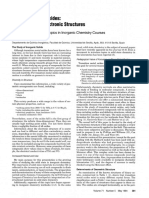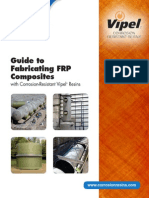0% found this document useful (0 votes)
60 views7 pagesVolatile Solid Test
This document describes a test to calculate the total volatile solids in a water sample. The test involves weighing a crucible empty, with a dried sample, and with an ignited sample. The total solids and total volatile solids are then calculated based on the weight differences and sample volume. The sample was found to contain 8840 mg/l of total volatile solids. Volatile solids provide information about organic content and wastewater strength, with higher levels indicating stronger wastewater.
Uploaded by
Sivar RzgarCopyright
© © All Rights Reserved
We take content rights seriously. If you suspect this is your content, claim it here.
Available Formats
Download as PDF, TXT or read online on Scribd
0% found this document useful (0 votes)
60 views7 pagesVolatile Solid Test
This document describes a test to calculate the total volatile solids in a water sample. The test involves weighing a crucible empty, with a dried sample, and with an ignited sample. The total solids and total volatile solids are then calculated based on the weight differences and sample volume. The sample was found to contain 8840 mg/l of total volatile solids. Volatile solids provide information about organic content and wastewater strength, with higher levels indicating stronger wastewater.
Uploaded by
Sivar RzgarCopyright
© © All Rights Reserved
We take content rights seriously. If you suspect this is your content, claim it here.
Available Formats
Download as PDF, TXT or read online on Scribd
/ 7














